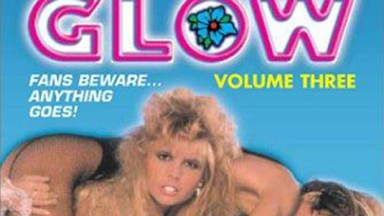
1. Yes, G.L.O.W. was a real thing in the 1980s. During the height of the 1980s wrestling boom, American businessman (and wrestling fan) David B. McLane came up with the idea of an all-women wrestling program. He teamed up with B-movie director Matt Climber to make the dream come true. “David wanted to combine the glamor and the grit [of professional wrestling],” a former G.L.O.W. wrestler said during the 2012 documentary, per Refinery29. “Matt’s idea was to make it campy and silly.” The result was the Glamorous Ladies Of Wrestling, which ran from 1986 to 1990.
2. The women of G.L.O.W. were everything but wrestlers (at least, at first.) Before the show went off the air, more than 40 women graced the G.L.O.W. ring. These women portrayed characters like Tina Ferrari, Matilda the Hun, Sally The Farmer’s Daughter, Little Egypt, Sunny the California Girl, Roxy Astor and Colonel Ninotchka. However, very few of them were actual wrestlers. Most of them were often actresses, dancers and models that answered a casting call for “ a new sports entertainment show,” according to the Washington Post.
3. The women were encouraged to make it seem real. During the eight-month season, the G.L.O.W. women bunked at the Riviera Hotel, but they were never allowed to go out and party together. “The rules of GLOW were clear: We were always in character, and forbidden to socialize with our enemies on the show,” Jeanne Basone, who played Hollywood on G.L.O.W. “There were even two buses, one for the bad girls and a separate one for the good girls.”
4. It was problematic. On one hand, G.L.O.W. has been viewed as a very empowering organization that allowed women to achieve levels of fortune of fame. “We came alive in the ring,” Dee Booher, who played Matilda the Hun. “Like winding up a good-girl doll or a bad-girl doll.” On the other hand, with characters like Jailbait, Little Feather and Mike the Headhunter, G.L.O.W. could be seemed as being marred by its use of racist stereotypes.
“There are things that are incredibly offensive in wrestling,” GLOW co-creator Liz Flahive told Vanity Fair, “and that was very interesting to us. We wanted to see our girls grapple with the stereotypes of the time and what they were being asked to deal with in the name of a job.”
5. It ended as quickly as it started. G.L.O.W. was abruptly cancelled in 1990 when the show’s main financial backer, Meshulam Riklis – an Israeli billionaire and the owner of the Riviera Hotel – pulled funding. The reason has never been revealed but some suspect that Meshulam’s wife, Pia Zadora, was jealous. With the show over, most of the G.L.O.W. women found regular 9-5 jobs. None became full-time actors and only a handful — including Lisa Moretti, Olympia Hartauer, Trudy Adams and Cynthia Peretti – became full-fledged wrestlers.
However, the legacy of G.L.O.W. continues to live on. The original wrestlers continue to attend G.L.O.W. themed events. “Person after person came up to us at the last cruise saying, ‘I was dead inside. You woke me up,’” Eileen O’Hara, who portrayed Melody Trouble Vixen on the show, told the Washington Post. “They figured, if we could be that outrageous, then so could they.”
GLOW comes out on Netflix on June 23. Are you excited to watch it, HollywoodLifers?